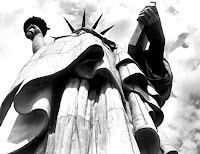The camera:
Explain the “camera obscura” effect. How is it achieved?
Inside a completely dark room, a tiny hole is created in one wall.
Through the hole light is focused, and the outside scene is projected
(upside down) on the opposite wall.
What invention during the 17th Century helped man get a step closer to creating the modern camera?
When Isaac Newton and
Christian Huygens perfected the understanding of optics and the process of making high quality glass lenses.
What were the parts of the first modern camera invented by Niepce?
A glass lens, a dark box, and film.
What do modern digital cameras have in common with Niepce’s camera?
A glass lens, a dark box, and film.
What do digital cameras use to capture an image?
digital cameras capture the images with an electronic sensor called a CCD.
Camera modes:
What is the difference between the Auto Mode and the Program mode?
The camera will completely control flash and exposure. On most cameras this is labelled "auto", on others simply "A". Some cameras only have (P)rogram.
-automatic-assist, just point and shoot. Unlike full auto mode, you can usually control flash and a few other camera settings.
What is the Portrait mode used for? How does it work?
To attempt to blur out the background, camera will try to use the fastest available lens setting (aperture).
What is the Sports mode used for? (not just sports) How does it work?
To freeze motion, camera will use the highest shutter speed possible.
The Half Press:
Why should you do a half press on the trigger button?
You should hold it half press so it can focus.
While focusing, the camera will show a blinking focus indicator (usually
a green dot). When you hear a beep and the indicator stops blinking,
the camera is telling you it's ready to go..
Disabled Flash

sometimes you wont need
a flash and it make the
Picture seem more dermatic
It will automatically fire
if the camera thinks it
needs more light
Introduction to Exposure:
What happens to your photo if there is too much light?
Too much light and the picture will be washed out.
What happens to your photo if there is not enough light?
Not enough light and the picture will be too dark.
The Universal Stop:
What is a Stop?
A relative measure of light.
How many stops brighter is the new planet if there are two sons instead of one?
1stops
How many stops brighter is the new planet if there are four sons instead of two?
2 stops
Shutters and Aperture:
What affect does a longer shutter speed of have?
It has more light.
What affect does a shorter shutter speed have?
It has less light.
What does the aperture control?
It controls light
When adjusting the aperture, how can you increase the amount of light?
When you ajust the aperture you can increase the amount of light by telling the camera to use smaller f-stop numbers









